'It was so secret they didn’t allow any of what we did to get out'
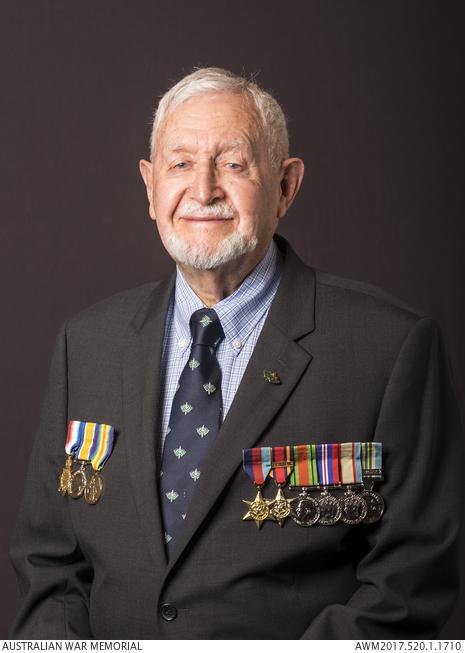
It was the middle of the night and Ronald “Dixie” Lee was in a small boat with two others. The men were Coastwatchers and they were preparing to go ashore in the middle of enemy territory to spy on the Japanese during the Second World War.
“We were sent to a little island called Stirling Island in the Treasury Island group which was just off Bougainville,” he said.
“The islands were completely controlled by Japan, and we set up a little camp there.
“There were three of us – an officer, a sergeant in the army, and then me, a coder from the navy.
“Your heart probably beats a little bit faster because you don’t know what’s ashore… but I realised early on that I was immortal, so nothing sort of frightened me.
“Some of our blokes were beheaded and terrible things … But I just did my job. It wasn’t a case of coming back saying, hey, I’m a hero; you didn’t think about it, and I just came back and did ordinary work – the fighter pilots, and tail gunners, and things; they were the brave ones.”
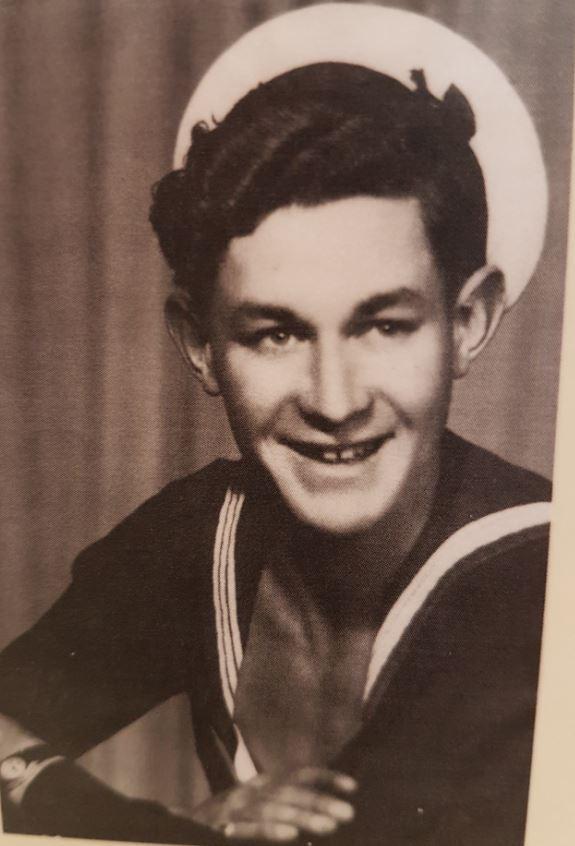
Ronald Lee joined the navy when he was 17. He became known as Dixie in the navy. Photo: Courtesy Dixie Lee
Dixie had joined the Royal Australian Navy at the age of 17, and was a high-spirited young rebel who got into his fair share of scrapes. He was still only 19 and had already witnessed some of the most dramatic events of the Pacific War when he was encouraged to join the Allied Intelligence Bureau and volunteer for Coastwatching duties.
“It was so secret they didn’t allow any of what we did to get out,” Dixie said.
“We had our headquarters in a place called Hahndorf House in Brisbane, but we couldn’t go straight in; we had to walk around the block to make sure no one was following us.
“It was just part of the war, and we knew that we were a very secret society.
“If you look up my record, there’s nothing; it says I spent the rest of the war from ’43 to ’46 in the naval depot, but I wasn’t there, I was in the Coastwatchers.”
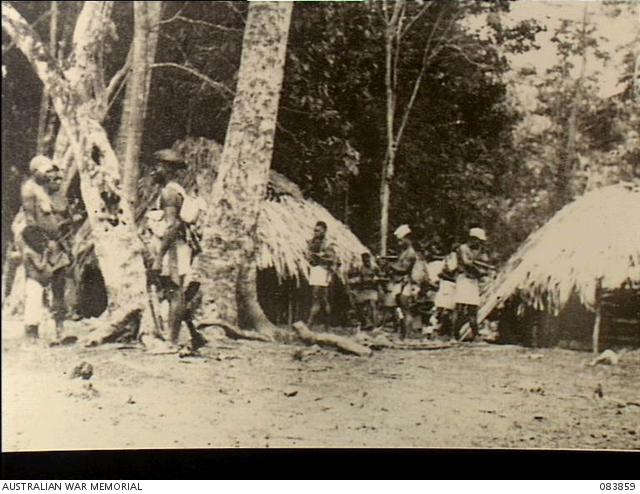
A typical Coastwatcher camp.
Stationed on remote Pacific islands to observe enemy movement and rescue stranded Allied personnel, the Coastwatchers played a vital intelligence gathering role during the war.
They were code-named "Ferdinand" after the popular children's book character Ferdinand the bull, who sat among the flowers and refused to fight. The name was chosen as a reminder to the Coastwatchers that their job was not to fight and draw attention to themselves, but to sit quietly and spy on the Japanese and gather information.
Hidden behind enemy lines, the Coastwatchers warned of Japanese air strikes, reported on the movement of Japanese shipping and troops, and saved countless lives, including that of future US President John F. Kennedy. Their reports gave vital warning time to the Allies and allowed them to take a decisive toll on the enemy, changing the course of the Pacific War.
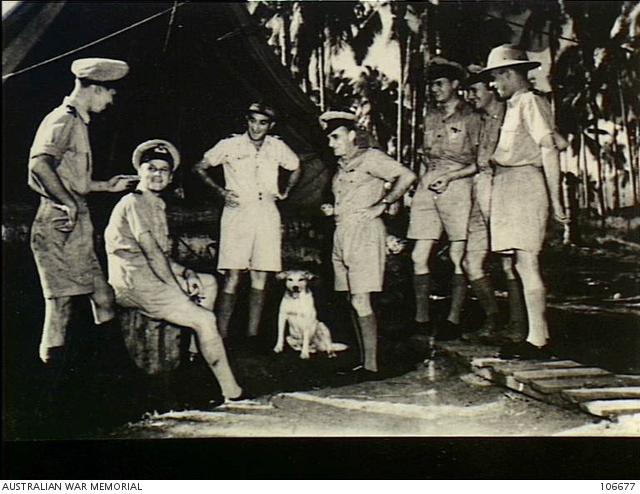
Guadalcanal, Solomon Islands. Coastwatcher personnel at their headquarters in front of the wireless hut. Left to right: Lieutenant A. Dyce, Lt Cdr H.A. Mackenzie, Flt Lt R.A. Robinson, Lt F.A. "Snowy" Rhoades, Lt J.G.G. Shotter, Lt T.K.J. Patrick, and Sub Lt C.B. Bell.
As a Coastwatcher, Dixie served at Vila in the New Hebrides, Guadalcanal, the Treasury Islands, Torokina in Bougainville, and in Lae, Nadzab and Finschhafen.
He remembers “rank did not matter” as the small team worked together and were more concerned with “doing the job and staying alive”.
He greatly admired Lieutenant ‘Snowy’ Rhoades, a First World War officer who became like a father to him. To Dixie, Lieutenant Rhoades was “fearless, but smart and resourceful”, and “the glue that held the team together during difficult operations”.
“He was a bit of a rebel himself, and I think he saw something of himself in me,” he said. “I was like a son to him, and I would have done anything for him; I would have died for him.”
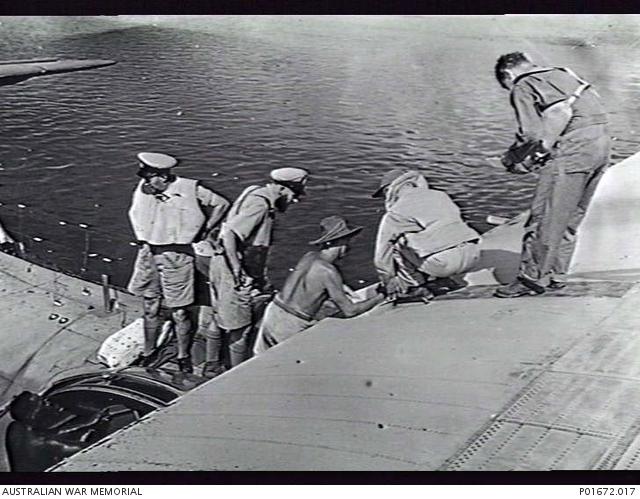
Solomon Islands, 1944. Handing over supplies from a Catalina Flying Boat to Lt F.A. "Snowy" Rhoades.
He remembers almost coming to grief while fishing with grenades. One time he dived in to get the fish … but one grenade had yet to explode. It left him badly stunned.
“We had hundreds of grenades – TNT – and we used to cart them around in case the Japanese came,” he said.
“I didn’t know where up or down was, and I was burning and stinging all over, and I couldn’t’ hear anything.
“My mate didn’t know whether I was going to live or die, but I couldn’t get onto the radio and say, ‘Hey, I’ve been fishing and I’ve blown myself up – you can’t send a sub in for someone who has done that, so I persevered, and I lived on Aspirin for a week, or so, and eventually came good, but I’ve always had problems with my ears, even now.”
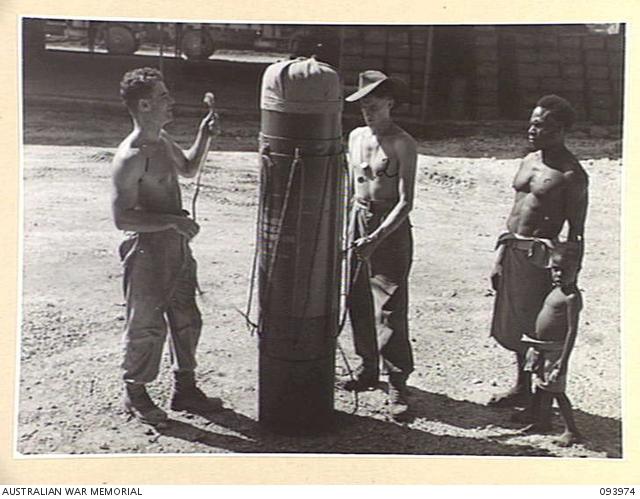
Food and other supplies were dropped in parachuted ‘storepedos’ by Liberator or Catalina.
During his time as a Coastwatcher, Dixie also made friends with the local people, who provided valuable intelligence support, such as information on airstrips and gun placements.
“The Japanese had a gun placement in a cave overlooking a waterway so that you couldn’t see it from the air, but the locals told us about it, and we were able to get the coordinates,” he said.
“The next thing, the Americans came racing in, wiped it out, but the only way they got that information was through the Coastwatchers.”
It was a dangerous business, and the men knew they faced being tortured and killed if they were discovered. He remembers capturing a Japanese soldier who was lost at sea.
“He’d been out sailing on a homemade thing and he got blown away,” Dixie said. “He was going past our island, so we raced out in our folboat, and captured this hapless Jap; he was not a very imposing figure – he was very skinny – and they sent a PT boat and we handed him over.
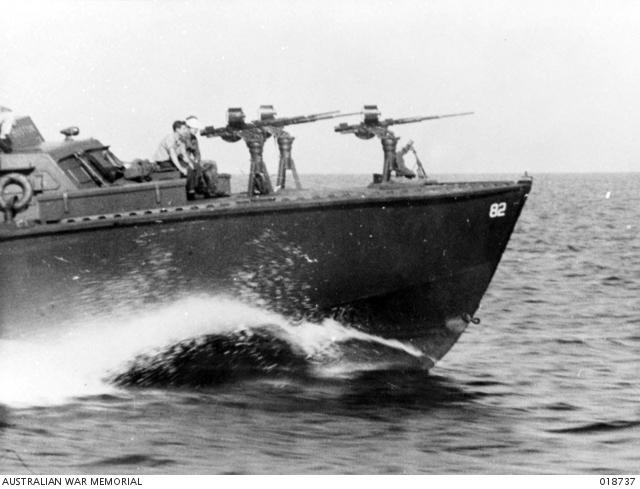
An American PT boat patrol out during Allied invasion operations in 1945.
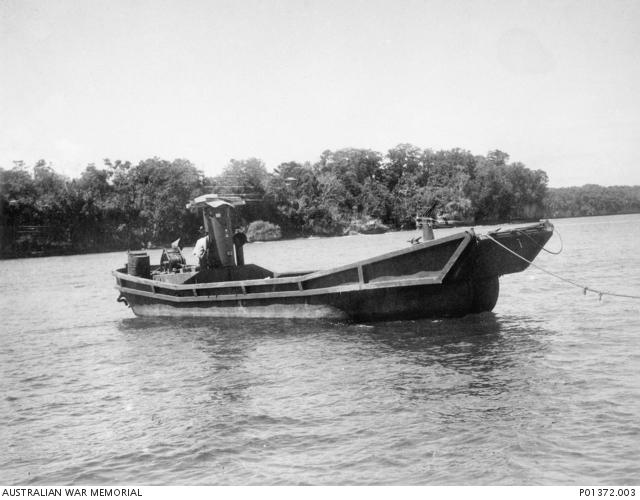
A Japanese barge in 1944.
“Another time the PT boats came around and we asked to go on board … they were made of plywood, but they had big Rolls Royce engines and they would go like the hammers of hell.
“We went out hunting for barges … The Japanese would bring them down at night to take supplies and we would blast them out.
“We were using an American plane to help us; we found a barge and the captain said ‘Drop a parachute bomb – a parachute flare – just above where we are’, so the next minute it came down and opened out … and then it was just like daylight over the whole area.
“We were just about to go into the barge, and then suddenly boom, a bomb blew up, I suppose, about 50 yards away from us. Our captain said [to the American pilot]: ‘Where the hell are you? What are you doing?’
“A Japanese float plane had taken off to do some reconnaissance, and when they looked down, suddenly there was daylight and a PT boat, so they cut their engines, came in quietly, and dropped a bomb from probably 1,000 feet, and then went on their way quietly.
“If he’d touched it about a second before, we wouldn’t be here talking.”
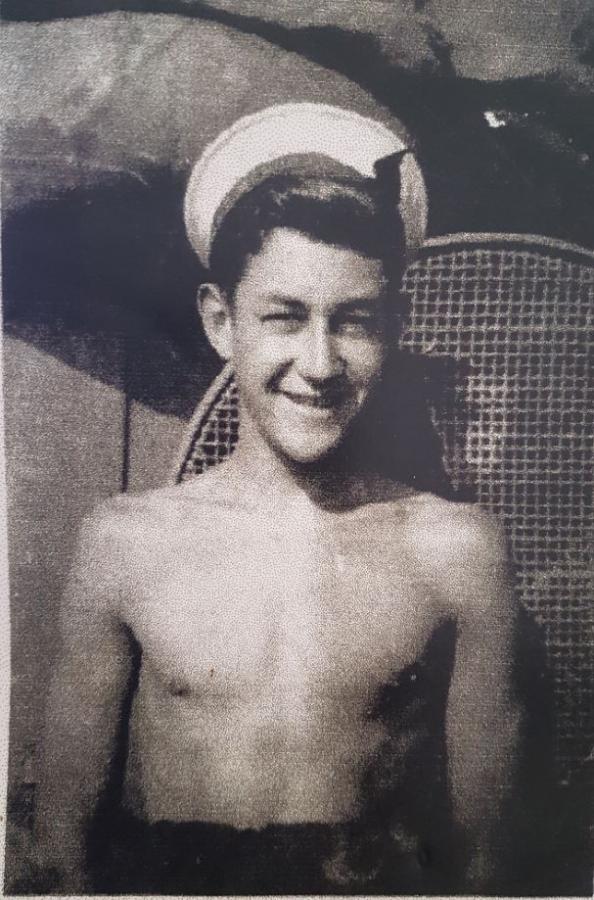
Dixie Lee during his time in the navy. Photo: Courtesy Dixie Lee
Ronald "Dixie" Lee was born at Ulverstone, Tasmania, on 4 July 1924, and was fascinated by the Navy ships he saw as a boy growing up.
“These ships would come in to Burnie and they were wonderful,” he said. “The smell, and the tar, and just everything about it; they would give kids cakes from the gallery, and the sailors just looked terrific in their uniforms, and I thought, ‘That’s for me.’”
Dixie’s father and uncle had both served during the First World War and Dixie was determined to follow in their footsteps when the Second World War broke out. His father had died when he was eight, and the Navy became like a second family to him.
“I was at a friend’s place one Sunday, and it came on radio that we were now at war with Germany,” he said. “It was September the 3rd, and I thought, ‘Bugger, I’m going to miss it,’ because that was ’39 and I was only 15.
“I was so keen … and I was determined to get in, so I did my medical when I was 16; then on July the 4th, I sent a telegram, and I said, ‘Hey, I’m 17 now,’ but by the time I got down to the naval depot in Hobart, I was 17 and one day.”
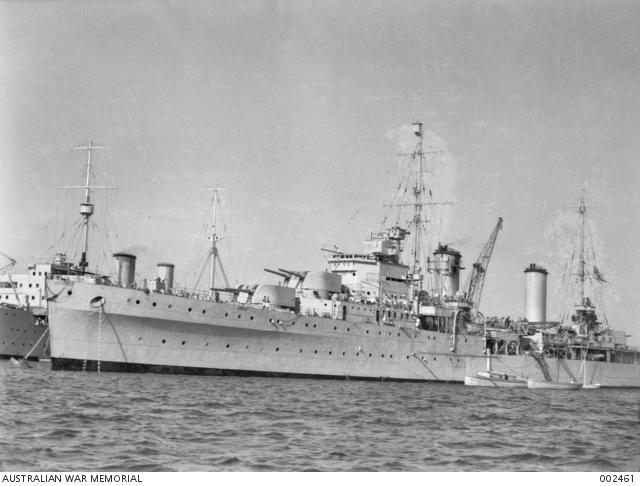
HMAS Sydney in Egypt after the successful action against the Italian cruiser Bartolomeo Colleoni.
He joined the communication branch, learning all about codes and cyphers.
“It was a new branch,” he said. “And when we finished the course they said, ‘Where would you like to go to?’ HMAS Sydney was the glamour ship – it had already sunk an Italian cruiser in the Mediterranean – so I put in for Sydney and I was bitterly disappointed when they didn’t send me to the Sydney, but it sank a few months later with all hands.”
Instead, Dixie was posted to the armed merchant cruiser HMAS Manoora, doing convoy duties. He arrived in Singapore Harbour the day before Japanese forces bombed the city and Britain and the Dominions declared war on Japan in December 1941.
“I wasn’t even 17 and a half, and I got on a warship, and we got bombed,” he said.
“When the bombers came over, I thought I’m going to die if one lobs on the ship, so I’ll get right down into the bowels of the ship, and right down to the engine room, and if we get a direct hit, I’ll live.
“I was very fit and very young and I was like a little monkey. I knew all these secret places, and I had this method of going down the companion steps. I’d put both legs over the brass rail and swoosh, I’d go down like that, but while I was down there I thought, ‘Hang on, if a bomb misses, and goes down alongside, and blows open the plates, the sea will come in, and I’ll drown,’ so swoosh, I was off again.
“There’s two decks – an upper deck and a lower deck – and I finished up there, so that if a bomb went through a couple of decks, I’d still live, but if it started to sink I could swim ashore, and [I was thinking] all these little things to try and keep body and soul together.”
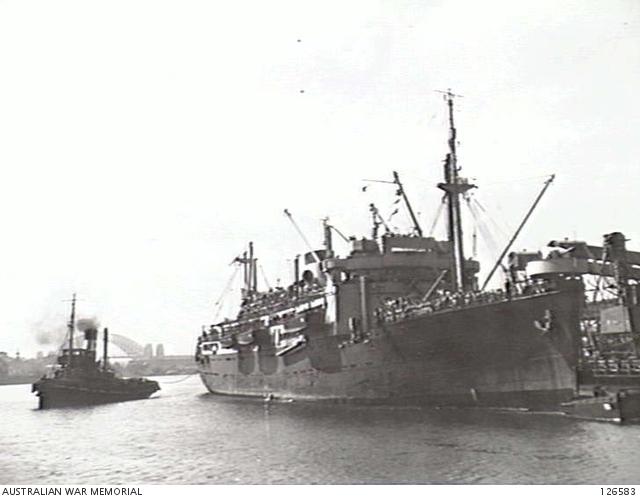
HMAS Manoora in Sydney in 1946.
He remembers seeing the pride of the Royal Navy’s Eastern Fleet, the Prince of Wales and Repulse, just days before they were sunk by the Japanese.
“When we went out of Singapore on to Calcutta, we passed the Prince of Wales and Repulse,” he said. “Everyone said look at them – the battleship and the battlecruiser – and they were beautiful, but three days later they were under the sea and they were gone.”
He also recalls the night the Japanese midget submarines entered Sydney Harbour in May 1942 and attacked Allied shipping. Manoora had returned to Cockatoo Island for a scheduled docking on the 25th, and Dixie’s shore leave had been cancelled once again.
“There were 640 of us on board, and I was the youngest,” he said.
“I had to be belligerent to keep up with the 21-year-olds who were four years older, so I was a bit of a rebel, I can tell you, and I got my fair share of punishment.
“We were taking convoys in the middle of the Indian Ocean – thousands of miles from South Africa, India, and Australia – and I went up on deck to marvel at the height of the waves of the Southern Ocean and the big albatrosses following the boat.
“An officer on board came down and saw me; I was out of the rig [uniform] of the day, and we were at war, but he took me before the officer of the watch. They gave me ‘stoppage of leave’ which was a bit of a lark and I had to get up early and mix with the able seamen in rubbing down the bulkheads and getting rid of the salt and all that sort of thing.
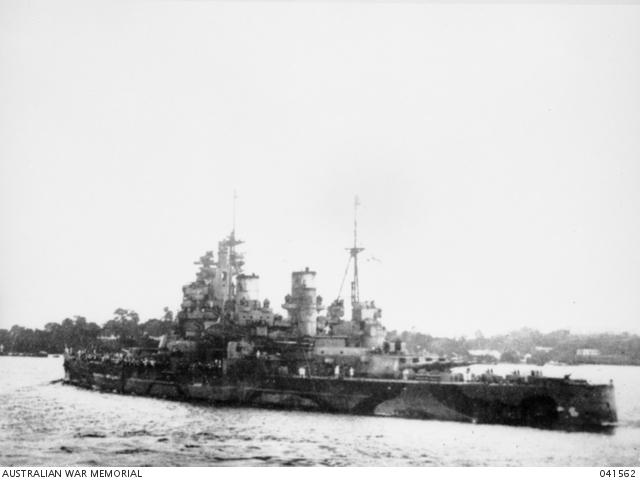
Singapore Harbour, 8 December 1941. The RN warship HMS Prince of Wales leaving the harbour for action off the east coast of Malaya. She was sunk by a Japanese air attack just two days later.
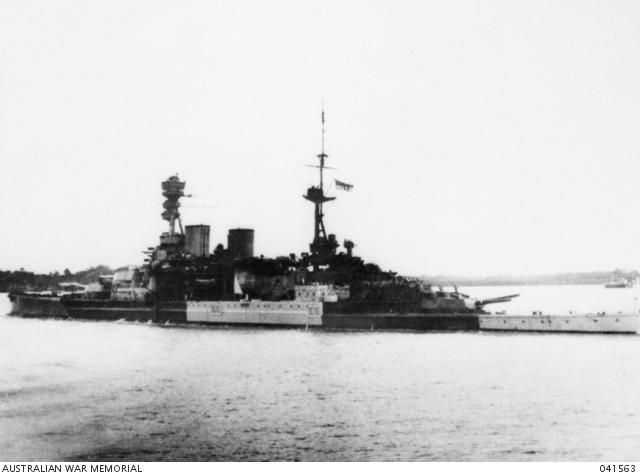
HMS Repulse leaving Singapore Harbour in December 1941. She was sunk by the Japanese just two days later.
“When we got to Sydney, we had to do a degaussing – that’s when they put heavy cables all around the ship to [neutralise the magnetic field and] stop the magnetic mines.
“We were in dry dock in Cockatoo, and I was still doing stoppage of leave for being cheeky, or not getting my hair cut, or something like that.
“The phone rang in the signals office and … they said, ‘Kuttabul, torpedo,’ and I couldn’t believe it.
“A friend of mine was on the Kuttabul because he was going to another ship; he’d taken his bag and his hammock, and he gone there for a couple of days while they sorted things out, but he died.
“I raced down to the captain’s cabin, but the captain was ashore. He’d taken shore leave, but the commander was there, and so I knocked on his door. I could hear him snoring, and so I opened the door a little bit, and there he was sound asleep. I went, ‘Ahmm, ahmm,’ but nothing happened, so I raced over to the bed, punched him on the chest, and then raced back and closed the door.
“When I heard him coming to, I opened the door again, and I said, ‘Sir,’ and showed him the message…
“Well, I tell you, if it had been a cartoon, the eyes would have popped out of his head… And that was the night when they discovered the midget subs.”
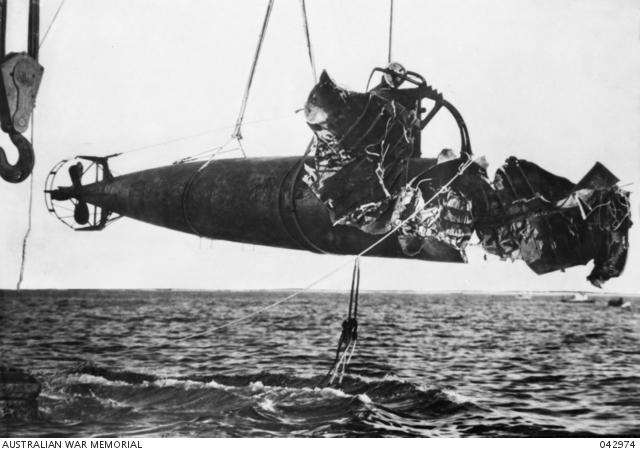
One of the Japanese midget submarines which were destroyed during the raid on Sydney Harbour in May 1942.
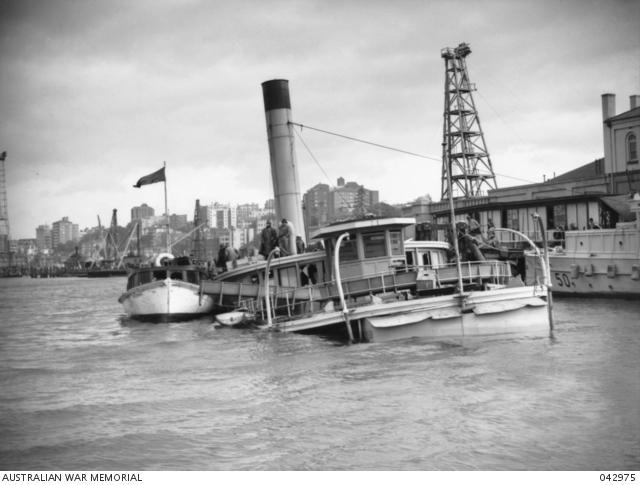
The naval depot ship Kuttabul which was damaged by a Japanese torpedo during the raid on Sydney Harbour.
A few months later, Dixie had another lucky escape.
“It’s just the luck of the draw,” he said. “I wanted to get away from this officer and a boat came alongside us – a corvette called HMAS Armidale. One of my friends – a coder – was on board, and he said they wanted another, so I put in for it, and went before the officer in Sydney Harbour, but he said, ‘No, we need Lee here… Dismissed.’
“It was just one of those things, but it would have been a death sentence; the Armidale was sunk about a month later, up in the Timor Sea with nearly everyone on board.”
Instead, Dixie was posted to the Brisbane base, HMAS Moreton, and reported for duties in General McArthur’s new temporary Brisbane headquarters at the AMP Building in Queen Street, doing coding and decoding. It was there that he was encouraged to join the Allied Intelligence Bureau and volunteer as a Coastwatcher.
He remembers there was “great rejoicing” when the war ended and they were finally able to return home. He had spent nearly five years in the navy, over half of which was as a Coastwatcher, by the time he was discharged in March 1946. He went on to pursue a successful career as a licensed surveyor, married five times, and has 10 children, 17 grandchildren and 17 great-grandchildren.
In the 1970s, he hand-built a 45ft yacht, sailing it for three years through much of the South Pacific, retracing some of his wartime adventures. He was particularly keen to revisit the Treasury Islands and Bougainville, reuniting with old friends who had helped him during the war.

The Coastwatchers Memorial Light at Madang Harbour.
In 2015, he visited Papua New Guinea as part of a commemoration marking the 70th anniversary of the Victory in the Pacific and laid a wreath at the Coastwatchers Memorial at Madang.
“I put my wreath down and I came back and I had these waves of tears… and that was about the only thing that got to me," he said.
“But as I go through life – no matter what happens – it’s a rich tapestry.
“And here I am, still going.”